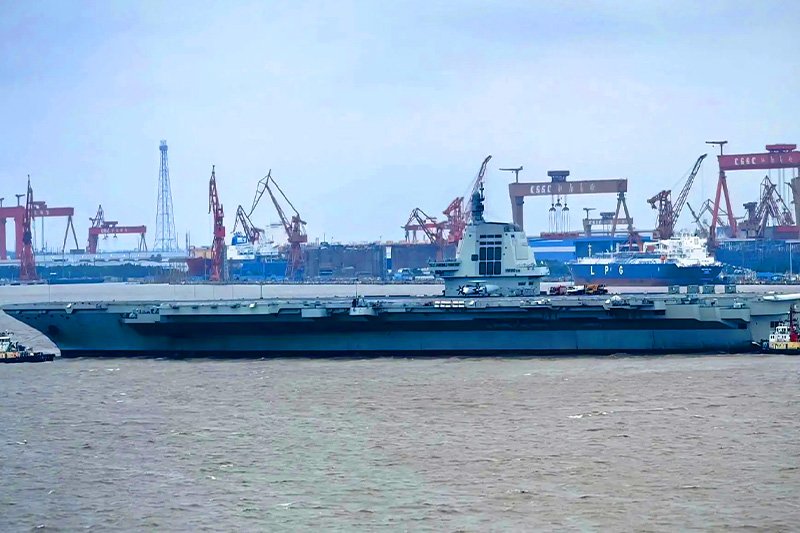Chinese Carrier Fujian Completes Fourth Sea Trial
The Chinese People’s Liberation Army (PLA) Navy has made significant strides in its naval capabilities with the recent completion of the fourth sea trial of its newest aircraft carrier, the Fujian (18). This article explores the latest developments and their implications for China’s growing maritime power.
Fujian’s Fourth Sea Trial
The Fujian, China’s third aircraft carrier and the most advanced to date, recently concluded its fourth sea trial after departing from the Jiangnan shipyard facilities. Open-source intelligence (OSINT) reports confirmed this latest milestone in the carrier’s development process, which began in late August or early September.
Mock-up Aircraft on Deck
One of the most notable aspects of this trial was the presence of scale models of aircraft on the Fujian’s flight deck. These mock-ups are believed to represent the future air wing of the carrier, with the KJ-600 early warning aircraft being particularly prominent. This development suggests that the PLA Navy is moving closer to operational testing of its carrier-based aircraft.
Electromagnetic Catapult Testing
During this trial, the public got its first glimpse of the Fujian’s electromagnetic catapult system in action. Videos and images of load-launch tests, reportedly conducted in port last year, were shared publicly for the first time. This advanced launch system is a significant technological leap for the Chinese Navy, potentially putting it on par with the latest US carriers.
Significance for the PLA Navy
The fourth sea trial of the Fujian coincides with a historic moment for the Chinese Navy. For the first time, all three of China’s aircraft carriers – the Liaoning, Shandong, and Fujian – were simultaneously at sea. This demonstrates China’s rapidly expanding naval capabilities and its ability to project power across multiple maritime theaters.
Towards Initial Operational Capability
While the exact timeline for the Fujian’s entry into service remains undisclosed, these ongoing trials are crucial steps towards achieving initial operational capability. The Chinese Navy has been tight-lipped about the various configurations and technologies equipping this new flagship, adding an element of strategic ambiguity to its development.
Future Implications
The continued development and testing of the Fujian signify China’s commitment to building a world-class navy. As the most advanced aircraft carrier in the Chinese fleet, the Fujian represents a significant leap in capabilities, potentially altering the balance of power in the Indo-Pacific region.
Read more: New Warplanes Set to Debut at Airshow China
Technological Advancements
With its electromagnetic catapult system and the ability to launch heavier aircraft, the Fujian demonstrates China’s growing technological prowess in naval aviation. This could lead to the development of more advanced carrier-based aircraft and enhance the PLA Navy’s overall combat effectiveness.
Regional and Global Impact
As the Fujian moves closer to operational status, it’s likely to influence military strategies and alliances in the region. Countries in the Indo-Pacific may seek to bolster their own naval capabilities or strengthen partnerships with other nations in response to China’s growing maritime power.
The completion of the Fujian’s fourth sea trial marks a significant milestone in China’s naval modernization efforts. As testing continues and the carrier moves towards operational status, the global maritime community will be watching closely. The Fujian’s development not only showcases China’s technological advancements but also signals its ambitions as a major naval power on the world stage.
Keep connected with us at Facebook, Twitter, YouTube, Instagram & TikTok for latest defense happening around the globe.
Discover more from International Defence Analysis
Subscribe to get the latest posts sent to your email.












